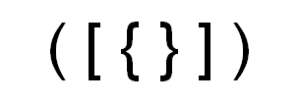
When writing a narrative essay, your reader needs to see, hear, smell, taste and touch along with the writer, so it’s the writer’s job to show these details as clearly as possible. It’s not enough to tell the readers that someone is beautiful, handsome, slim or happy; the readers must see it for themselves. Writers can do this by incorporating sensory details.
As humans, we learn about the world and our surroundings through our senses. A reader needs to feel engaged in the written world you are creating. When we write using sensory detail, we are showing someone or something as it is instead of telling. Incorporating the five senses – sight (visual), sound (auditory), smell (olfactory), taste (gustatory), and touch (tactile) – into a narrative forces readers to see, hear, smell, taste, and touch just as the writer or character does. Writing that incorporates sensory images engages the reader and makes the writing come alive. Writing that utilizes sensory images quicken the pulse, gives you goose bumps, makes you taste and smell and hear what the writer tastes, smells, and hears.
Take, for instance, the following example:
The mountains are beautiful.
What, exactly, does “beautiful” look like? The word “beautiful” doesn’t tell us what color the mountains are, how high they are, what they might sound like (echoing or rustling leaves?) or smell like (clean cedar or musty leaves?). Mountains in Colorado are quite different in every “sense” than mountains in southern Appalachia.
Take this example taken from a student essay, as the writer is describing her grandmother:
She was very pretty.
What does “pretty” look like?
Revision:
My grandmother’s silver hair sat at her crown in a tight knot. Her skin, creviced from decades of laughter, hung loosely over her still high cheekbones. As she kneaded the dough, her thin, delicate hands sprinkled flour atop the dough, the smell of freshly baked bread clinging to her like perfume.
In narrative essays, you want the reader to experience what you experienced. Telling an audience something looks beautiful or pretty is vague; you need to create a sensory image of what “beautiful” or “pretty” means to you. Look at the following short paragraph describing a boy helping an elderly woman up a flight of stairs:
Grandmother Workman reached over and grabbed her grandson’s arm. He was nervous because the staircase was so steep, but she leaned against him and they began to climb.
Now, look at the same scene, but here, the writer has incorporated sensory detail:
Grandmother Workman lurched over and grabbed the pale skin of Randal’s thin forearm with her leathery hand. The folds and creases beneath her skin coiled themselves out like electrical wiring, like the bloated, roughly-textured relief map of the world that his mother just posted above his bedside table. Randal looked ahead toward the winding spiral staircase, fidgeted with a small hole in his baseball jersey, and bit his lip. His mouth filled with the sweet, coppery taste of blood as she leaned in closely toward him, breathing her hot breath on the damp hair at the base of his neck. She smelled of wet cigarettes and bacon. As they slowly climbed the long, steep staircase, the only sound was his grandmothers’ labored breathing and the mournful creak of the wooden stairs.
(writing.colostate.edu)
How many senses are utilized in this scene?
One way to help you incorporate more sensory images into your writing is by drafting the narrative first, then go back through the draft to see where you have told when you could have shown, and incorporate sensory details. The chart below is one type of tool to use as you construct and revise your narrative:
Sight
I see… __________________________________________________________________________________________________________________________________
Sound
I hear… __________________________________________________________________________________________________________________________________
Taste
I taste… __________________________________________________________________________________________________________________________________
Smell
I smell… __________________________________________________________________________________________________________________________________
Touch
I feel… __________________________________________________________________________________________________________________________________
Remember that as you write your narrative, your reader didn’t experience what you experienced. To engage your reader, work on incorporating sensory detail into your narrative, and watch your writing come alive.


 When composing a narrative essay, dialogue is an essential component for creating an engaging story. Without the spoken words, the reader can’t “hear” the characters (the real people who you are introducing to your audience) and get to know them. Simply summarizing what a character said isn’t as engaging or interesting as direct dialogue between characters.
When composing a narrative essay, dialogue is an essential component for creating an engaging story. Without the spoken words, the reader can’t “hear” the characters (the real people who you are introducing to your audience) and get to know them. Simply summarizing what a character said isn’t as engaging or interesting as direct dialogue between characters.


